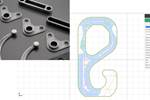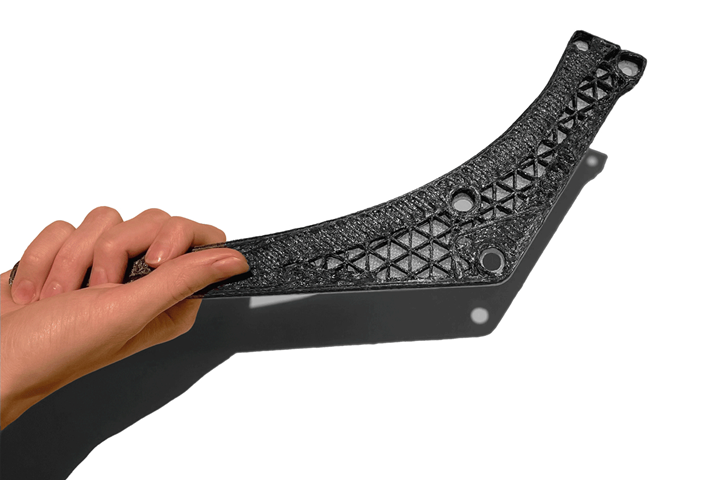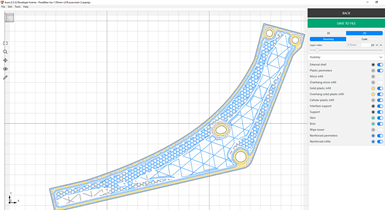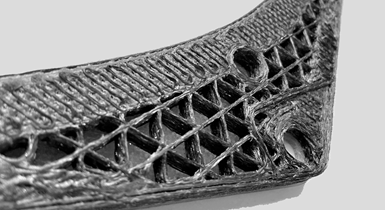Anisoprint, Additive Flow launch full-scale topology optimization software for composites
Additive Flow’s FormFlow software enables users to optimize geometry smoothly through all phases of the design process. The tool is compatible with Anisoprint’s slicing software, Aura, for composite 3D printing.
Share
Read Next
Anisoprint (Esch-sur-Alzette, Luxembourg), a composite 3D printing startup, and Additive Flow (London, U.K), a British additive manufacturing (AM) software developer, now offer a full-scale computer-aided engineering (CAE) tool compatible with Anisoprint’s slicing software, Aura, for composite 3D printing. The software will reportedly enable users to optimize geometry smoothly through all phases of the design process. The beta version will be released in October 2021.
Continuous composite 3D printing requires extensive expertise to design anisotropic structures, specifically for fiber paths, load simulation patterns, thermal exposure calculations, weight and other tasks. According to the companies, such tasks can only be performed by professionals with structural performance of materials expertise.
Additive Flow’s software, Formflow, is a CAE tool for performance analysis and structural anisotropic design. Additive Flow says Formflow will boost the advantages of Anisoprinting. Developing designs with anisotropic structures is now automated and precise, and prototyping will be faster with assistance from AI-driven computation and optimization. The trial-and-error method will now be replaced by physics simulating algorithms that define optimally performing parts. Material use will also be optimized.
According to Additive Flow, FormFlow takes care of topology, decreasing the manual input involved in printing and enabling specialists to focus on other work. In addition, the software leads to improved flexibility due to clear quantitative analysis of loads.
Formflow is now designed to export files compatible with the Aura proprietary slicer. Users are not required to know the geometry of the model, only the target parameters. Thermal resistance, strength, stiffness, weight, sustainability, time and cost of production can be mapped in Formflow to calculate the optimal shapes and properties. Once the model is optimized, it is fed to Aura to prepare for printing.
Related Content
-
Jeep all-composite roof receivers achieve steel performance at low mass
Ultrashort carbon fiber/PPA replaces steel on rooftop brackets to hold Jeep soft tops, hardtops.
-
ATLAM combines composite tape laying, large-scale thermoplastic 3D printing in one printhead
CEAD, GKN Aerospace Deutschland and TU Munich enable additive manufacturing of large composite tools and parts with low CTE and high mechanical properties.
-
Active core molding: A new way to make composite parts
Koridion expandable material is combined with induction-heated molds to make high-quality, complex-shaped parts in minutes with 40% less material and 90% less energy, unlocking new possibilities in design and production.


















